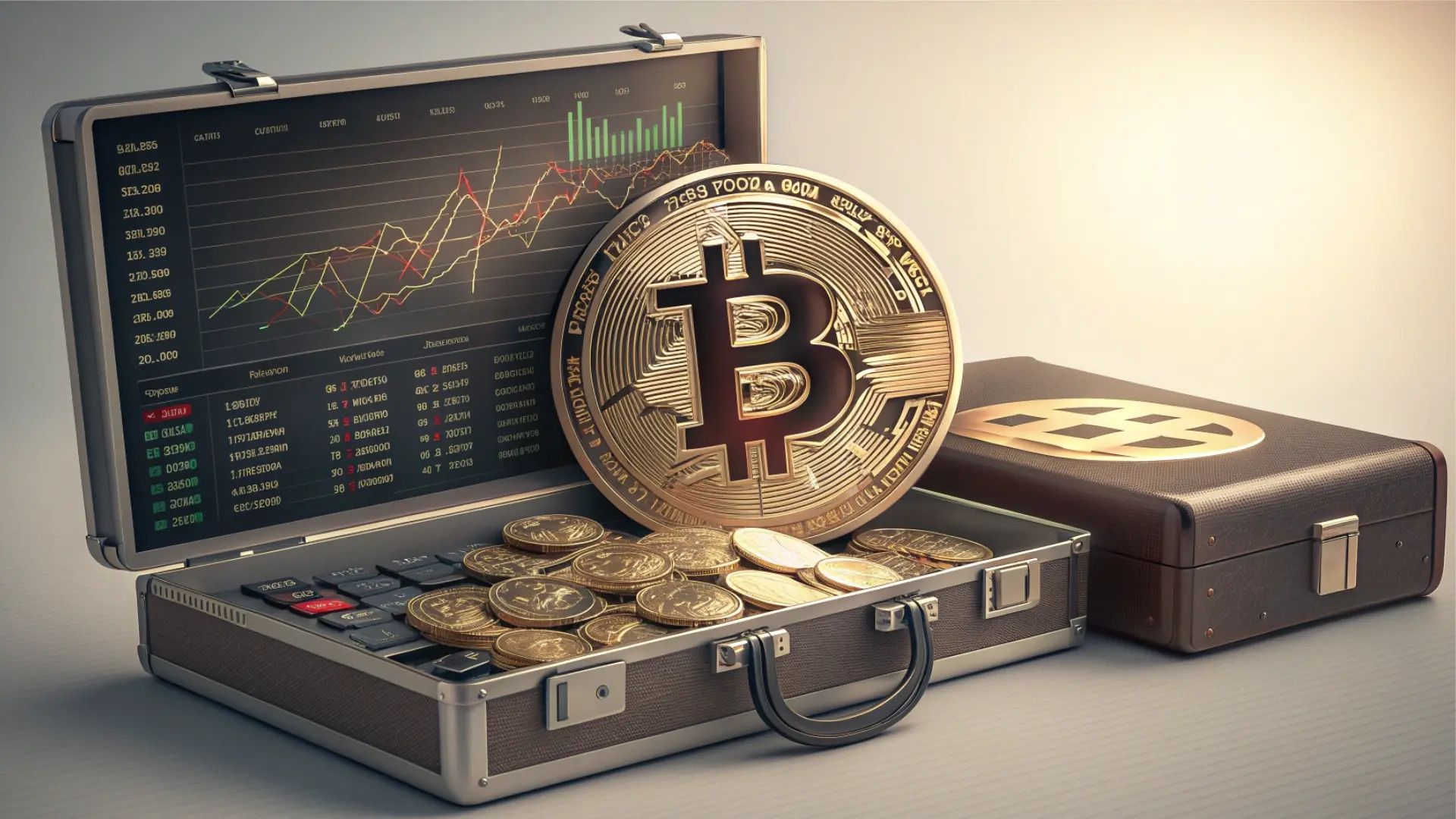- Unhashed Newsletter
- Posts
- Bitcoin outshines U.S. dollar
Bitcoin outshines U.S. dollar

Reading time: 5 minutes
No MEV. No Gas
CoW Swap blocks MEV so bots can’t front-run your trades. Keep more of every swap.
Bitcoin rides ‘debasement’ trade as $165K projections loom large

Key points:
Since late 2024, investors are buying gold and Bitcoin to hedge against a weaker U.S dollar.
Recent U.S. government shutdown has strengthened this debasement trade.
News - Bitcoin started Q4 with strong momentum, just as investors hoped.
Within the first week of October, Bitcoin hit a lifetime high of $125K , breaking through key resistance levels. Meanwhile, sticky inflation continues to impact the U.S economy. In fact, data revealed that August’s inflation stood at 2.9%, marking a 0.2% month-over-month hike.
Normally, rising inflation would push investors away from risk assets. However, Bitcoin surged regardless. In fact, JPMorgan analysts have referred to this as a “debasement trade,” suggesting that Bitcoin’s $125K milestone may be just the beginning of a larger bullish trend.
Dollar weakness boosts assets- The U.S. dollar (DXY) isn’t gaining much ground right now.
Currently, it’s still about 15% below its July high. Simply put, the U.S dollar is weak, and this is pushing investors to put their money into alternatives. This trend, known as the debasement trade, has been driving Bitcoin’s rally since Q2. The U.S government’s shutdown has only strengthened it further.
According to JPMorgan’s strategists, the debasement trade increased in Q3 because investors were buying more gold and Bitcoin. For example, Bitcoin ETFs gained momentum after Trump announced new tariffs in April. This devalued the DXY by 7%, while gold ETFs caught up in August. Overall, the debasement trade has been growing steadily since late last year.
A $165K forecast? - Amid market ups and downs, Bitcoin, gold, and U.S. stocks have all hit new highs.
However, measured in Bitcoin, the S&P 500 has lost value over the years, with many blue-chip stocks falling behind. Meanwhile, gold is up 132% over three years. On the other hand, Bitcoin has soared by more than 514%.
According to Bitwise CIO Matt Hougan, “debasement” is the key trend for 2026. Because of this, the Fed is expected to cut rates even though inflation is high.
For example, September’s ADP report showed 32,000 job cuts. This may be a sign that a falling dollar is putting pressure on the labor market. This would support JPMorgan’s year-end Bitcoin forecast of $165,000.
Ripple prepares for institutional era with privacy at the core

Key points:
Ripple says privacy will let institutions use XRP Ledger safely.
Smart contracts will connect these features and help XRP Ledger grow into its institutional era.
News - In 2025, Digital Asset Treasuries (DATs) are becoming a big trend.
For example, CleanCore Solutions (NASDAQ:ZONE) backed a Dogecoin (DOGE) treasury and accumulated 600 million DOGE. Similarly, XRP is getting attention, with Everything Blockchain Inc. adding $10 million worth of XRP to its treasury.
Despite this interest, Ripple Labs faces challenges in fully joining the DAT ecosystem. Although regulatory clarity and institutional interest exist, XRP’s role as a bridge currency limits its standalone use. Nevertheless, Ripple’s CEO has confirmed the next step for XRP’s institutional adoption.
Privacy for institutions - Ripple sees privacy as the “final gap” in the XRP Ledger ecosystem to boost institutional use. Recently, Vet, a well-known XRP Ledger contributor, shared this in an X post with a photo of him talking to CEO Garlinghouse.
In the post, he explained that the ledger already has tools like decentralized IDs (DID), on-chain credentials, permissioned domains, multipurpose tokens (MPTs), and a DEX with both AMM and order book features. However, it still needs a privacy layer.
This will be added through solutions like zero-knowledge proofs (ZKPs), which make transactions confidential. Therefore, institutions can use tokenized assets as collateral without exposing sensitive information to competitors.
Why XRPL needs privacy? - XRP is mainly used as a bridge currency.
Simply put, it is mostly used to move money between other currencies, not to be held on its own. For example, a bank might use XRP to send funds from the U.S to Europe, but it would avoid keeping large amounts of XRP in its treasury.
Why? Because XRP’s main purpose is to make transfers fast and cheap, not to act as a store of value. This means holding large amounts could expose institutions to security or privacy risks.
To address this, Ripple Labs is adding privacy tools. And, the timing is important too. According to Ripple’s Senior Director of Engineering Ayo Akinyele, trillions in institutional assets could move to blockchain networks in the next decade.
In this context, MPTs, launching in early 2026, will be key in supporting these privacy features and kickstarting XRP’s large-scale institutional adoption.
Morgan Stanley now endorses 4% Bitcoin allocation

Key points:
Morgan Stanley’s Global Investment Committee (GIC) recommends investors put up to 4% of their money in cryptocurrencies.
Bitcoin getting more attention from big investors right now.
News - Bitcoin’s “digital gold” story is now playing out clearly.
A few years ago, many financial institutions called crypto too volatile. Now, as the U.S economy faces rising uncertainty, Bitcoin has hit a valuation of $125,000 - A sign that investors are treating it more like gold. Or in trading terms, like a “store of value.”
However, this strength is not random. According to Farside Investors, over $2 billion have flowed into Bitcoin ETFs this month alone. Meanwhile, data from Glassnode revealed that Bitcoin balances on exchanges dropped to a six-year low, meaning fewer coins are now available for sale.
Supporting this thesis, Bitcoin ended Q3 with a 6.31% ROI, marking its strongest quarter since 2021. In this context, Morgan Stanley’s latest endorsement of Bitcoin marks a notable shift in institutional sentiment.
Key highlights from GIC report - Morgan Stanley’s Global Investment Committee (GIC) has now shared new guidance on investing in crypto.
In a report shared by Bitwise CEO Hunter Horsley, the GIC recommended putting 2% to 4% of portfolios into crypto, depending on an investors’ risk level. For high-risk “Opportunistic Growth” portfolios, they suggested up to 4%. For moderate-risk “Balanced Growth” portfolios, they recommended 2%, while safe or income-focused portfolios should have 0% allocated to crypto.
According to the exec, the report is “huge” news, with Horsley claiming that the GIC guides 16,000 advisors managing $2 trillion. He concluded,
“We’re entering the mainstream era.”
Worth noting, however, that the GIC also warned that crypto can be very volatile. And yet, since 2022’s bear market, Bitcoin has not had a single year with losses.
Does this mean that Morgan Stanley is still being “conservative” with crypto?
Volatility warning - Bitcoin has repeatedly shown that its volatility is a double-edged sword. From a 20% dip in Q1 to a 30% rally in Q2, the swings illustrate Morgan Stanley’s GIC view of “cautious optimism.” The GIC explained:
“While the emerging asset class has experienced outsized total returns and declining volatility over recent years, cryptocurrency could experience more elevated volatility and higher correlations with other asset classes in periods of macro and market stress.”
Against this backdrop, a 4% Bitcoin allocation could be a sign of measured confidence.
DeFiLlama delists Aster perpetual data over suspected Binance copying

Key points:
DeFiLlama to delist perpetual futures volume data for Aster DEX due to concerns over data integrity.
Aster’s trading volumes seemed to closely mirror Binance Perp, with a near-perfect correlation.
News - Decentralized finance analytics platform DeFiLlama is in the news today after it announced that it will delist perpetual futures volume data for Aster DEX. The decision came on the back of concerns about the integrity of the trading data reported by the platform.
According to 0xngmi, the pseudonymous co-founder of DeFiLlama, Aster’s trading volumes have been “mirroring Binance Perp volumes almost exactly”, with a correlation ratio close to 1.
As expected, this unusual similarity raised questions about whether the reported volumes reflect actual trading activity or not.
0xngmi explained,
“Aster doesn't make it possible to get lower-level data, such as who is making and filling orders, so until we can get that data to verify if there's wash trading, Aster perpetual volumes will be delisted.”
Market activity- Aster, which launched in September as a competitor to Hyperliquid, has seen a huge increase in interest lately.
In just one week in late September, Open Interest grew by over 33,500% - A sign that many traders have been using its perpetual futures. According to DeFiLlama, the platform’s daily trading volumes hit an ATH of $60 billion on 25 September.
Analysts believe this growth is partly because Aster has captured a lot of attention in the crypto community. Its connection to Binance co-founder CZ has also helped attract traders.
Despite these impressive numbers, DeFiLlama has stated that without access to detailed information, it cannot confirm whether the trading activity is genuine or not. At the time of writing, the analytics platform was yet to receive any response from the Aster team.
More stories from the crypto ecosystem
Did you know?
By late 2025, about 28% of Bitcoin’s supply could become effectively illiquid. Fidelity Digital Assets notes that dormant addresses and institutional cold wallets may lock up over 6 million BTC, reducing the coins available for trading and potentially increasing price volatility.
In Q3 2025, Ethereum’s annual burn rate reached 1.32%, permanently removing millions of ETH via EIP-1559. Over 4.1 million ETH have been burned so far. Daily burn volumes slowed midyear as on-chain activity dropped, showing that Ethereum’s supply reflects user demand.
On 30 September 2025, the FTX Recovery Trust paid about $1.6 billion to creditors in its third payout. Funds were sent via BitGo, Kraken, or Payoneer. U.S customers have now recovered nearly 95%, and general unsecured claims about 85%, advancing FTX’s recovery plan.
Fact-based news without bias awaits. Make 1440 your choice today.
Overwhelmed by biased news? Cut through the clutter and get straight facts with your daily 1440 digest. From politics to sports, join millions who start their day informed.
Top 3 coins of the day
Mantle (MNT)

Key points:
Altcoin trading at around $2.15, reflecting sustained market momentum.
Price surge follows strategic developments, including a $2 billion stablecoin launch.
What you should know:
Mantle [MNT] has experienced a significant surge. In fact, it reached an all-time high of $2.16 on October 6, 2025. Currently trading at $2.15, the token has shown a 4.37% increase from the previous close. This upward momentum is supported by bullish technical indicators, including a positive MACD.
Strategically, Mantle has been making significant strides. The launch of the Tokenization-as-a-Service platform and the deployment of a $2 billion stablecoin by World Liberty Financial [WLFI] have bolstered its ecosystem.
Additionally, the upcoming NU7 upgrade is anticipated to further enhance its capabilities. These developments have contributed to a 24-hour trading volume exceeding $300 million. This is especially important because the RSI is currently overextended, which could help the market absorb any selling pressure without a sharp drop.
SPX6900 (SPX)

Key points:
SPX has surged by over 60% over the past week.
Positive technicals, high community engagement, and a 24-hour volume support further upside, though volatility remains a risk.
What you should know:
SPX6900 [SPX] has surged strongly over the past week. At press time, it’s trading around $1.60, moving between $1.54 and $1.63 during the day. Notably, over the past week, SPX6900 has experienced a significant surge of approximately 60%, indicating a strong bullish momentum.
This uptick is supported by favorable technical indicators. The MACD pointing upward and the RSI elevated but not yet overbought, suggesting momentum could continue.
Additionally, strong community support has fueled the rally, while a 24-hour trading volume over $65 million shows active investor interest. Looking ahead, analysts see potential for SPX6900 to reach $3.41 by year-end, though investors should watch for possible volatility.
Solana (SOL)

Key points:
Solana has been leading altcoin gains with an 11% rally.
A breakout past $230 could trigger FOMO towards the $250-ceiling, supported by SOL’s relative strength in a risk-on market.
What you should know:
Though Q4 started with Bitcoin reclaiming 59% dominance, keeping the rally BTC-led, Solana [SOL] is standing out among altcoins. It leads monthly gains with an 11% rally, even surpassing Dogecoin [DOGE], which is up 10%.
Supporting this, the SOL/BTC ratio rose 1.3% this week after three weeks of decline. This resilience isn’t a fluke. Instead, it reflects Solana’s growing influence in real-world assets (RWA), now 40% vs Ethereum’s 15%, along with $2 billion in stablecoin flows and strong institutional interest.
If this momentum continues, a breakout past $230 could spark FOMO, pushing SOL toward the $250 ceiling. With the market in a risk-on mode and Solana showing relative strength, the odds are leaning in its favor.
How was today's newsletter? |

